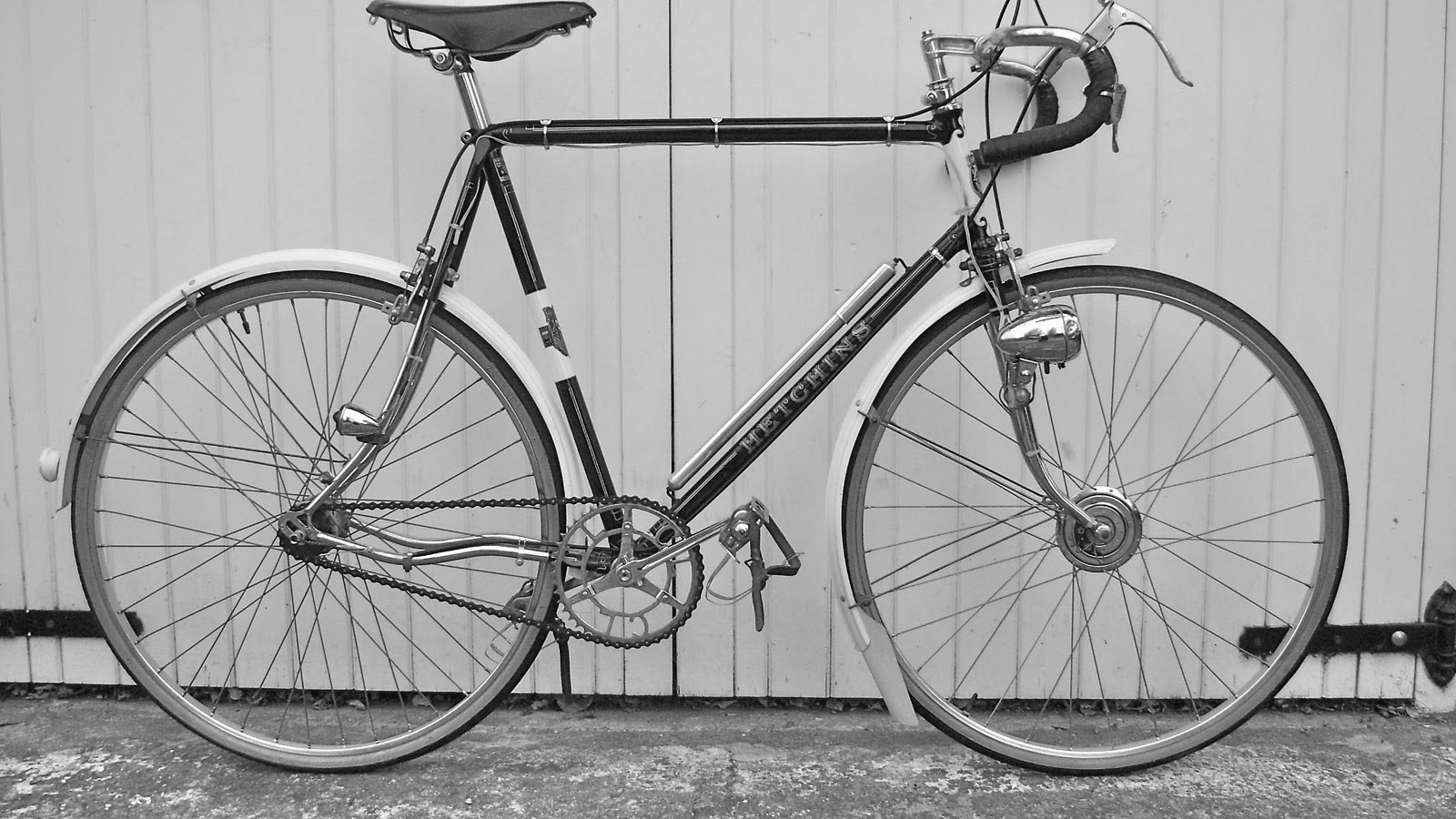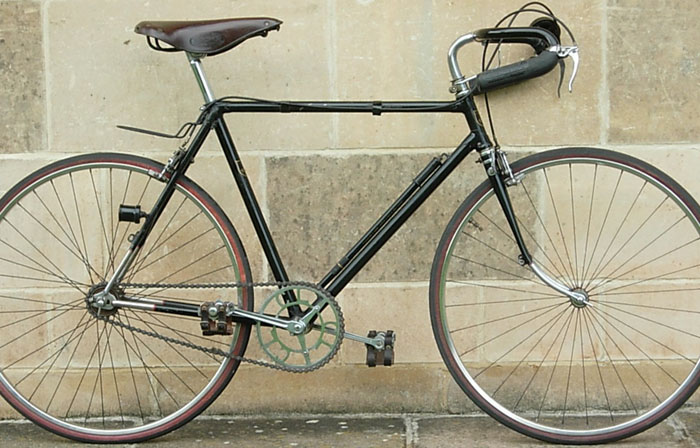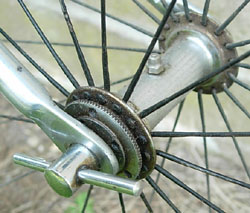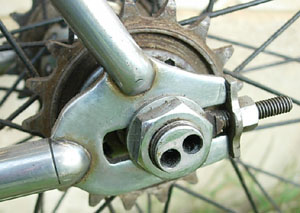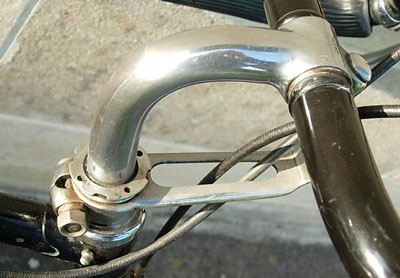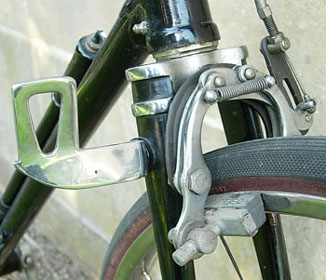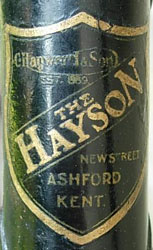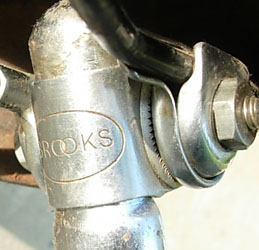The Hayson - Profile of a fine cycle No 14
Posted: Wednesday 19th August 2020
Transfer on for “C. Haywood & Co. New Street, Ashford, Kent”
An un-numbered 21″ frame built in circa 1936. This was the most remarkably original pre-war sporting cycle it has ever been my pleasure to find. A complete machine with expensive period components all in as new condition, a real time warp machine that has survived in nigh-on as new condition.
How long owned: First time in about 1997 and then again in 2010
How was it acquired: This is another of those cycles that I have owned twice and have thus doubled the pleasure by acquiring two times. A “For Sale” advert in “Cycling Weekly” in 1997 led me to the garage of a house in Solihull where was found a complete tandem and solo machine plus a mountain of equipment, a solo frame and a tricycle frame marked Hayson.
The former pile of components assembled up into both the Hayson tricycle & solo and it is the solo machine that is the subject of this Profile. Mr BM, the original owner, had died in the 1970’s and it was on the later death of his wife that his machines came onto the market . Never before or since have I seen such a hidden cycling Aladdin’s Cave of squeaky clear pre-war cycle components!
The Features that make it special: The frame itself is just a good example of a 1930’s sporting cycle with open-ended rear drop-outs, this is the original black finish with only a head and seat-tube transfer. There is no visible frame number but there may well be one under the thick paint of the marked Chater-Lea bottom bracket. A sign of quality is the Chater-Lea headset (just look at the clear makers marks and condition), chromed fork crown and forks/stays. Note the patent Chater-Lea Q/R dropouts and matching Chater-Lea disc adjusting hubs with hollow axles, this is the only cycle that I have ever owned fitted with them both front and rear. The front-forks both have holes only at the ends, one threaded and one clearance. The wheel axle is hollow, a skewer slides through and screws into the fork drop-out. Un screw it, withdraw it and the wheel drops out, as easy as that.
Note the choice of two holes for the similar rear dropouts. By removing the rear wheel, replacing it the other way around and returning the skewer but to the second hole the new wheel position accounts for a 2 teeth sprocket difference. Ever so simple and quick, this was one of the most successful Q/R wheel systems before Campag type Q/R was available.
See removable lamp bracket high up on the fork blade, note the earlier type fitting not the later universal type. Note the clearly marked Bluemels Raylight rear reflector and celluloid covered handlebars, the swan-neck stem, the exotic Constrictor Cobra brakes .
The Brooks B19 Saddle has bag loops cut into the leather and the Brooks clip clearly marked “Brooks”, both of these are pre-war features. The B19 was a longer version of the B17 and much favoured by pre-war cyclists, it was considered the long distance saddle as you “could slide back and forward on it giving differing positions”.It was not re-introduced after WW2.
The pre-war Chater-Lea chainsets were forged from one piece, note the the hollow grooves on the rear as well as the front. These are matched to “Southhall Special” pedals (named after famous racing cyclist Frank Southall ,three times winner of the BAR) and fitted with Brooks shoe-straps. These were favoured by many old-time cyclists over toe-clips. Even the Constrictor handle bar grips are still soft and spongy as if they were new yesterday. Note the Dunlop 26 x 1¼” Stainless steel rims, new out in the mid 1930’s, and period tyres still in very good condition.
What is remarkable (maybe unique?) is the unbelievable condition of all of these components. Surely somewhere out there some other collector has another such survivor in this condition, please let us all know if you know of one.
Anything else. It was obvious that Mr BM was a methodical man with an engineering background. These machines had been disassembled many years earlier and stored very carefully, all the bearing and chromed items were covered in a thick but runny grease that, once removed, surrendered components in a condition that can only be described as “ex-factory”. The leather saddles were as if they had remained untouched on a shelf for fifty years. Finds like The Hayson spoil collectors just how do you improve upon it.
Posted: Wednesday 19th August 2020
Upcoming Events
Whether you are looking for a gentle social meet up, or a 100-mile ride browse the community’s upcoming events and plan your next weekend outing.
